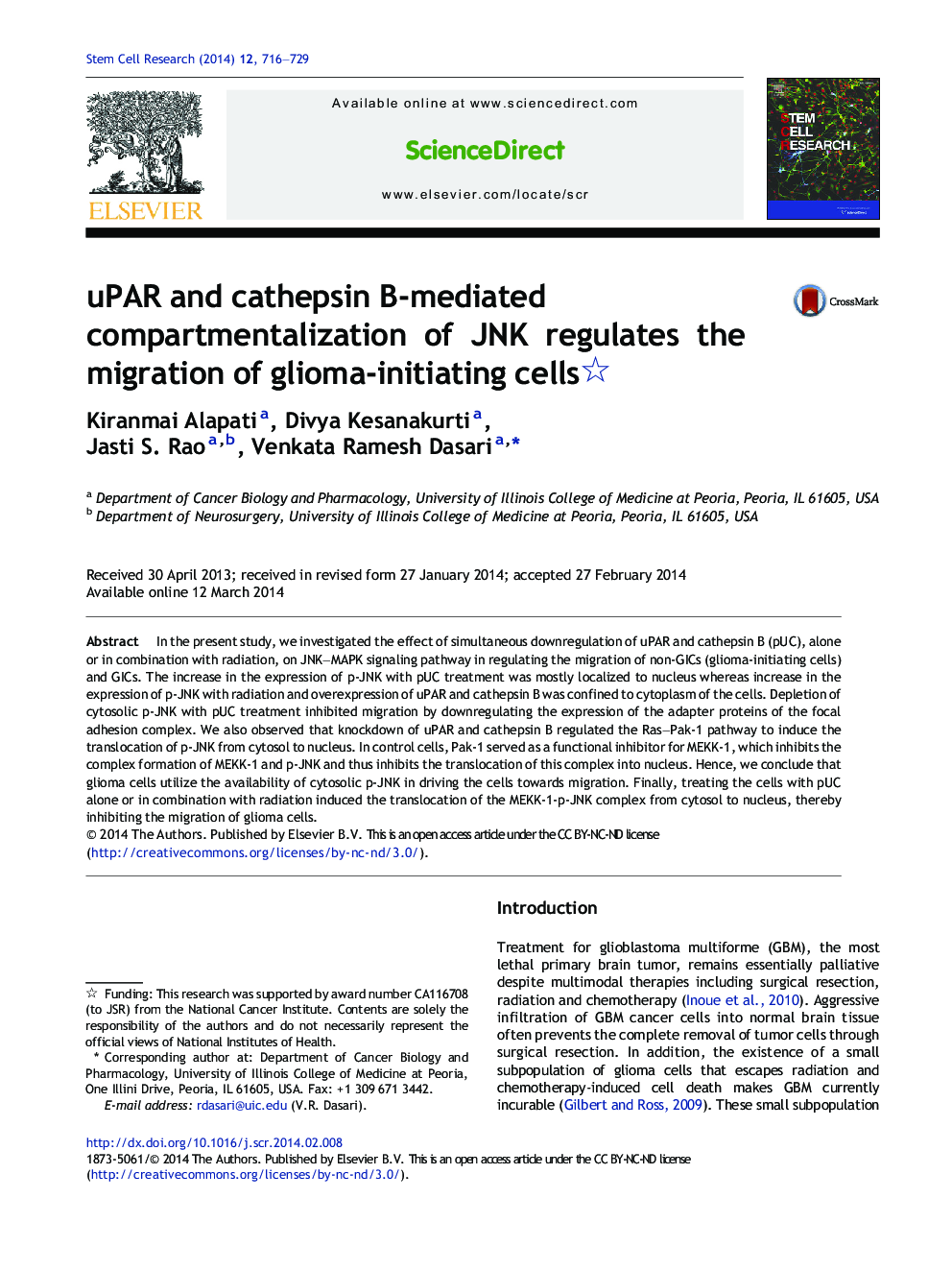| Article ID | Journal | Published Year | Pages | File Type |
|---|---|---|---|---|
| 2094533 | Stem Cell Research | 2014 | 14 Pages |
•uPAR and cathepsin B activate JNK pathway in regulating glioma cell migration.•Overexpression of uPAR and cathepsin B increases expression of cytosolic p-JNK.•Depletion of cytosolic p-JNK inhibits migration of glioma cells.•Glioma cells utilize cytosolic p-JNK in driving the cells towards migration.
In the present study, we investigated the effect of simultaneous downregulation of uPAR and cathepsin B (pUC), alone or in combination with radiation, on JNK–MAPK signaling pathway in regulating the migration of non-GICs (glioma-initiating cells) and GICs. The increase in the expression of p-JNK with pUC treatment was mostly localized to nucleus whereas increase in the expression of p-JNK with radiation and overexpression of uPAR and cathepsin B was confined to cytoplasm of the cells. Depletion of cytosolic p-JNK with pUC treatment inhibited migration by downregulating the expression of the adapter proteins of the focal adhesion complex. We also observed that knockdown of uPAR and cathepsin B regulated the Ras–Pak-1 pathway to induce the translocation of p-JNK from cytosol to nucleus. In control cells, Pak-1 served as a functional inhibitor for MEKK-1, which inhibits the complex formation of MEKK-1 and p-JNK and thus inhibits the translocation of this complex into nucleus. Hence, we conclude that glioma cells utilize the availability of cytosolic p-JNK in driving the cells towards migration. Finally, treating the cells with pUC alone or in combination with radiation induced the translocation of the MEKK-1-p-JNK complex from cytosol to nucleus, thereby inhibiting the migration of glioma cells.
